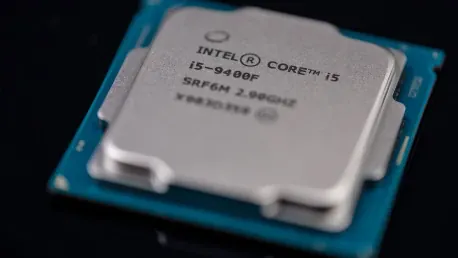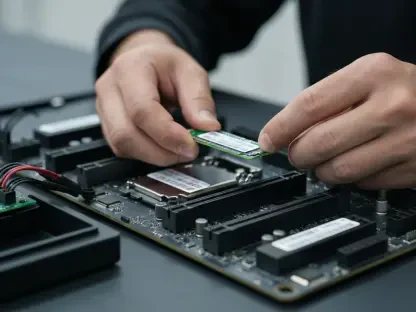Intel, a former powerhouse in the semiconductor industry, is currently facing challenges in adapting to the rapid advancements of the digital revolution. This article delves into the company’s failure to capitalize on the AI revolution, despite its prior technological prowess and significant market presence. It talks about its complacency, strategic mistakes, and failure to understand the importance of both hardware and software ecosystems in the AI landscape.
While companies like NVIDIA and AMD advanced by creating GPUs and specialized AI chips, Intel fell behind, often making efforts that were too small and too late.
The consequences of these miscalculations are now glaringly obvious. Intel’s market value continues to plummet as its AI chip offerings lag far behind competitors. And so, the company that once set the standard for innovation, keeps struggling to generate momentum in a rapidly evolving tech industry.
Let’s look at what Intel did wrong and examine the main reasons for its setbacks. What lessons can be learned from its journey from leader to laggard in the age of AI?
Complacency and Focus on Legacy Markets
For decades, Intel was synonymous with cutting-edge processors and enjoyed a near-monopoly in the CPU market, particularly for PCs and servers. This dominance bred a level of complacency, leading Intel’s focus astray, which remained largely on traditional markets—personal computers and data centers. There, it continued to push for incremental improvements in processing power. Meanwhile, AI and machine learning were rapidly growing and evolving, but Intel was too slow to jump on the bandwagon and pivot resources to these promising, new frontiers.
Missed Opportunities in GPU and Specialized AI Hardware
While Intel was fixated on pushing out more CPU technology, NVIDIA was busy investing in GPUs (Graphics Processing Units), which turned out to be perfect mechanisms for parallel processing in AI workloads.
And it wasn’t only this precise moment when GPUs suddenly started to rise in popularity that caught Intel by surprise and left it struggling. Around that time, custom AI chips like Google’s TPUs (Tensor Processing Units) arrived on the scene. Despite later efforts by the once-iconic tech giant to catch up through acquisitions like Nervana and Habana Labs, Intel was unable to match competitors who had already gained significant leads in this area.
Failure to Recognize the Importance of AI Software Ecosystems
Intel’s contributions in this area were minimal, leaving it without a strong foothold in the AI developer community. This gap meant that AI startups and research institutions gravitated towards hardware solutions from NVIDIA and others that were better integrated with the leading AI software.
Strategic Missteps and Leadership Changes
To further deepen Intel’s sinkhole, its strategic direction suffered from a lack of direction. There were frequent leadership changes and a lack of consistent vision. Instead of doing damage control during critical periods, the tech enterprise was distracted by internal restructuring. Along the same vein, it kept trying to zero in on competition in its core markets, further diverting attention from emerging trends in AI. These tactical mistakes lead to lost opportunities to partner with or invest in AI pioneers like OpenAI, who have since become pivotal players in the industry.
Late Entry into the AI Market
When Intel finally did turn its attention to AI, the market had already moved forward. Though substantial, its efforts were reactive rather than proactive, proving it is not enough in the extremely agile, more competitive than the Olympics industry. When Intel finally introduced some AI-infused products, competitors had already captivated a large share of the market for themselves. This made it hard for Intel to become a leading company in the AI hardware industry.
The Consequences of Missing the AI Wave
Intel’s slow response to the AI revolution has triggered a loss of market influence and revenue opportunities. On the other side of the court, competitors like NVIDIA, once niche players, have become MVPs of the AI industry.
To make matters worse, around seven years ago, Intel had the opportunity to invest in OpenAI. But then it was just a small non-profit research organization focused on generative artificial intelligence, and Intel dropped the ball.
In 2017 and 2018, executives from the two companies talked about different options. One possibility was for Intel to buy a 15% share in OpenAI for 1 billion USD. Another idea was for Intel to buy an additional 15% share if it made hardware for OpenAI at a cost price.
However, the tech giant ultimately decided against a deal because then-CEO Bob Swan did not believe that generative AI models would make it to market in the near future. Three sources, who all requested anonymity, shared this information.
OpenAI was interested in an investment from Intel because it would have reduced their reliance on Nvidia’s chips and allowed the startup to build its own infrastructure. The deal also fell through because Intel’s data center unit did not want to make products at cost, the people added. In the meantime, OpenAI created ChatGPT, which helped it grow so fast that the company is now worth about 80 billion USD. In other not-so-fortunate trading news, Intel’s stock price plummeted over 25% on the company’s worst trading day since 1974.
Intel’s Value Plummets as Nvidia and AMD Surge Ahead in the AI Chip Wars
For the first time in 30 years, the semiconductor chip manufacturer, which is known for its “Intel Inside” slogan is valued at less than 100 USD billion. It is now smaller than Nvidia, a competitor valued at 2.6 trillion USD. Nvidia has successfully shifted its focus from video game graphics to AI chips required for building, training, and running large generative AI systems like OpenAI’s GPT4 and Meta Platforms’ Llama models. Intel has also fallen behind AMD, a company valued at 218 billion USD.
Intel Bets on Third-Generation Gaudi Chip to Outperform Rivals in AI Market
Intel’s CEO Pat Gelsinger has announced that the third-generation Gaudi AI chip is scheduled for launch in the third quarter of this year. They hope to outperform competitors with this tactic. He also said that Intel has more than 20 customers for the second and third generation of Gaudi. He added that the next-generation Falcon Shores AI chip is scheduled to be released in late 2025, boating that it is a historic piece of design and process technology innovation. They are also encouraged by the product pipeline being built to capture a greater share of the AI market in the future.
In recent years, Intel has been working to create AI chips to compete with those from Nvidia and AMD but has faced challenges. This year, Intel’s data center business expects to make sales of 13.89 billion USD, including revenue from AI chips and other designs. For comparison, analysts predict that Nvidia’s data center revenue will be 105.9 billion USD.
Conclusion
Intel’s bad maneuvering could be a cautionary tale for any enterprise, not just one focused on the tech industry. If this story isn’t the best warning about the dangers of relying too much on past accomplishments and underestimating how quickly technology can change, then nothing else is. Intel’s slow response time to the new technological revolution, along with later efforts to catch up, show how important it is to be agile in the fast-changing world of AI. So, practice good foresight, and be ready to invest in new methodologies, devices, and inventions before they become widely used.









